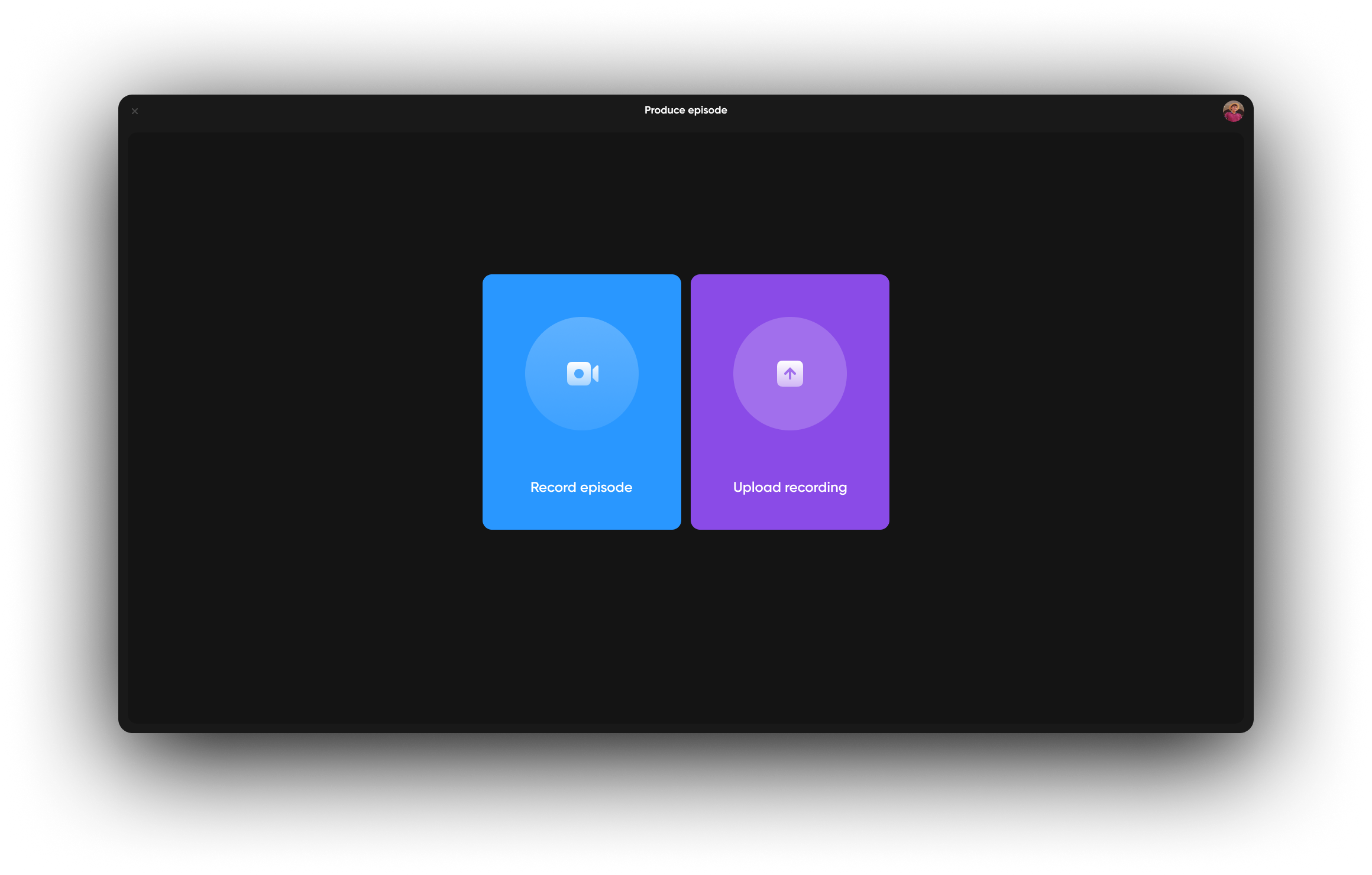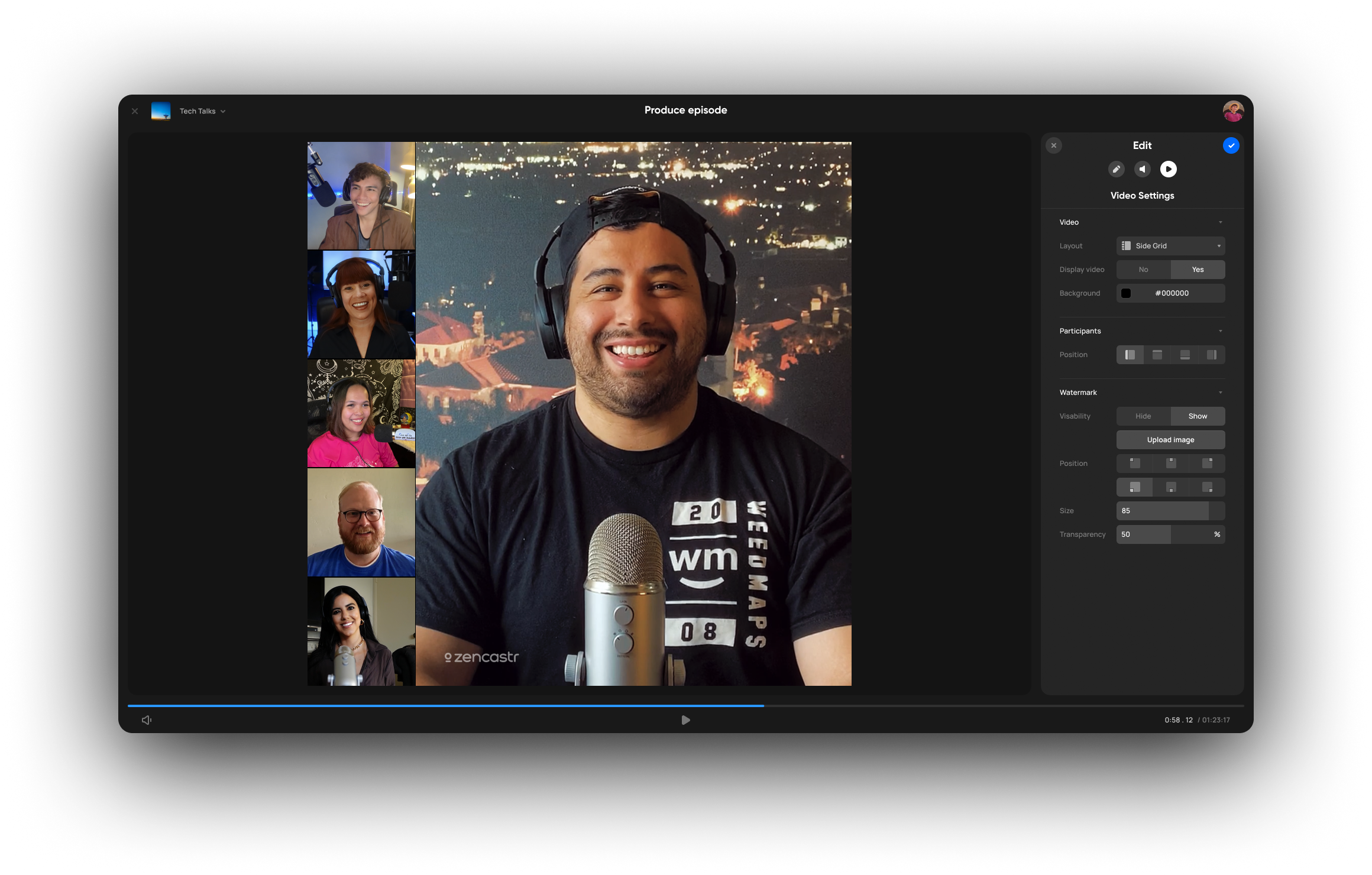Zencastr has been my go-to podcast recording platform for a while now, owing to an innovative system that records each participant’s channel locally, before uploading it to the server. It’s a nice, quick way to ensure your guests have better sound quality than non-purpose-built platforms like Zoom, without forcing them to record locally.
As an audio-only podcaster, when the platform added video, it felt more like a nice bonus than anything, affording me the ability to make eye contact with guests, even if that video never left the Zencastr servers.

Image Credits: Zencastr
It’s been clear for a while that recording has always been the tip of the iceberg when it comes to Zencastr’s podcasting ambitions. In early 2021, the startup rode the pandemic-fueled remote podcasting boom to a $4.1 million raise. Today it revealed its play to offer a kind of end-to-end podcasting solution that starts with the ability to record video in 4K, edit video and audio, distribute through the major players and monetize with ads.
The offering puts Zencastr’s platform a step closer to what Anchor has been offering for some time, but with a more platform-agnostic approach that is less tied to a single distributer like Spotify.
The service will be available through tiered pricing — similar to Zencastr’s current plans, but with an added “Growth” category that runs $59 a month ($49 at launch). The basic free plan includes 1080p video recording, an hour of post-production and 90 days of recording storage. At $29 a month ($20 at launch), Professional gets you Smart Filter editing (to remove silence, filler words and the like), Google Drive/Dropbox sync, unlimited master storage and English Transcriptions. Growth gets you 4K video, an ad manager and various other features designed to drive up downloads.
Like Anchor, the editing tools are focused on beginners and likely won’t replace the more advanced software suites professional podcasts use.
“We’ve definitely planted a flag on making editing as painless as possible for a lot of creators, regardless of if they’re new or existing,” co-founder and CPO Adrian Lopez tells TechCrunch. “Other users can take it into whatever their preferred software is and make the more narrative cuts. This is something we are looking to build and expand on. There’s a lot of AI we’ve invested in over the last few years to enable this. For new users, editing is a cold bucket of water that gets thrown on them, as soon as they start the process. This helps them get started in the right direction.”

Image Credits: Zencastr
Once edited, the system uses RSS to distribute the show to major podcast providers, including Apple, Spotify and Google. Zencastr also helps connect hosts with advertisers. “Eighty percent+ of podcasts are not monetized. It’s really surprising,” co-founder and CEO Josh Nielsen says. “There’s a ton of great, niche content out there, and podcast ads are more than 4.5x more effective than display ads.”
As for Zencastr’s biggest current issue — compatibility — the company says it’s working on that, too.

Image Credits: Zencastr
“We do have a limitation in that we only support Chrome, and it has to be a modern version,” explains Nielsen. “It can’t be on ancient computers. But we’re always adjusting that, trying to add more compatibility. We’re adding some solutions later in the year that will give people other options for how they can access the service.”















 English (US) ·
English (US) ·